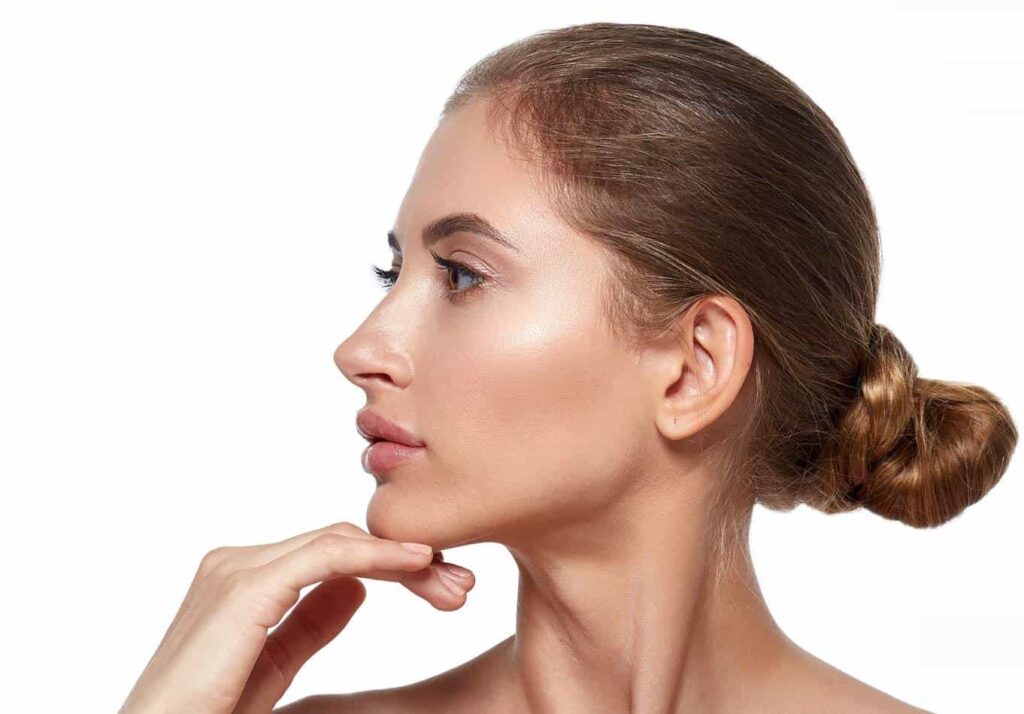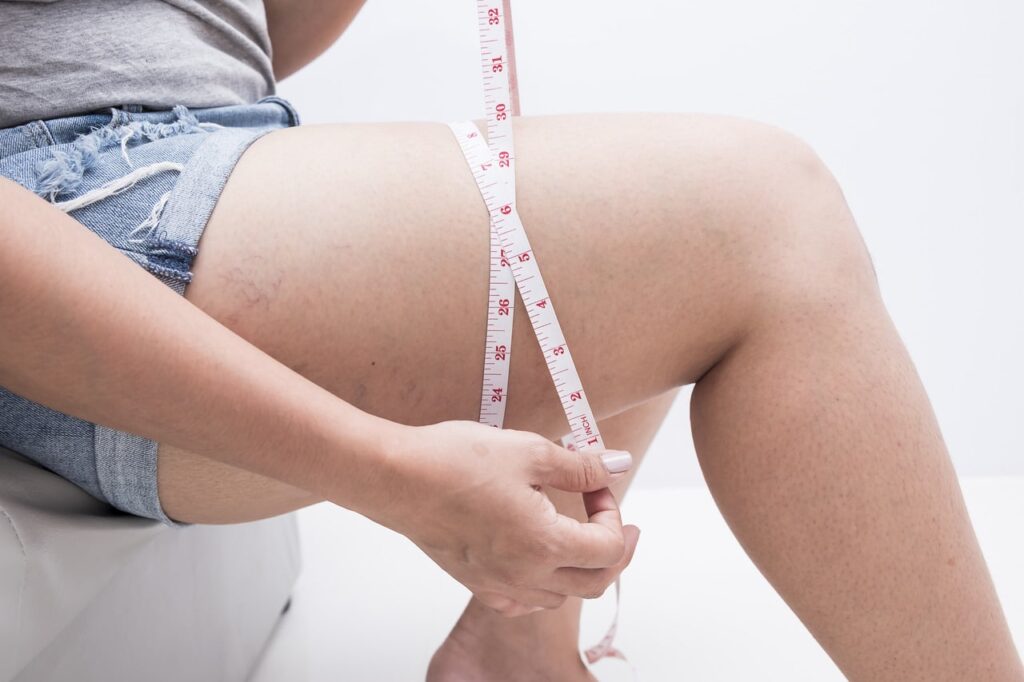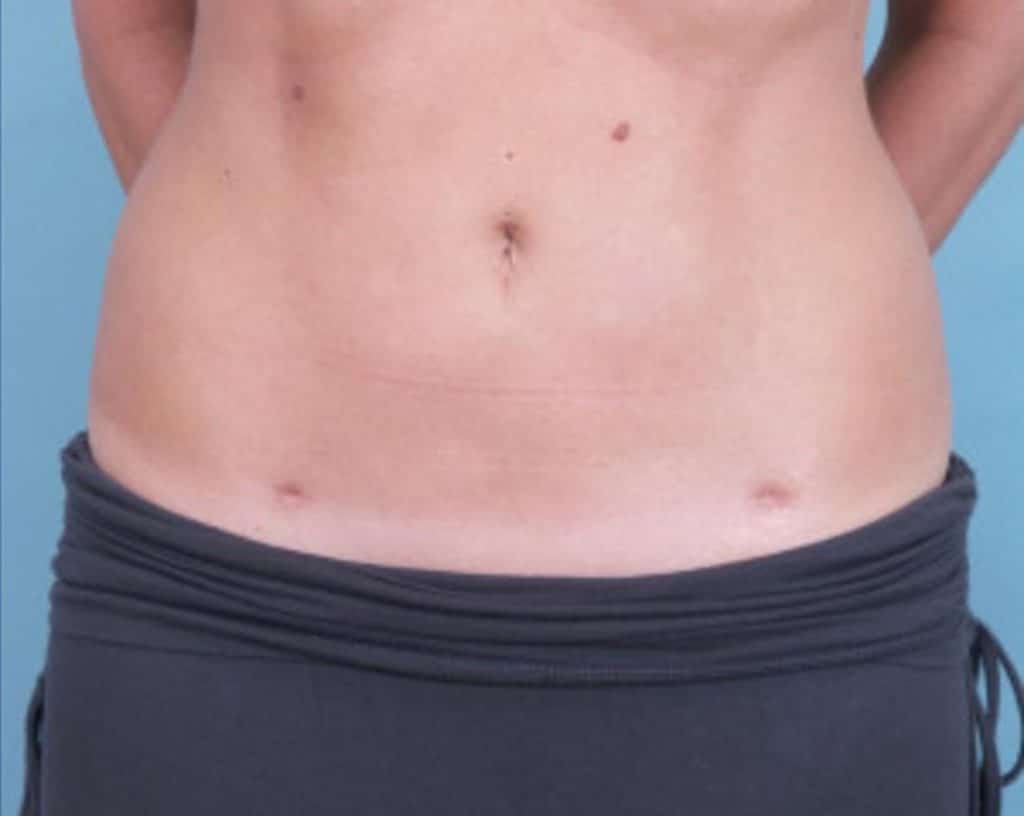Key Takeaways
- Microdermabrasion is Safe for Dark Skin: When performed correctly, microdermabrasion can be a safe and effective treatment for individuals with dark skin, offering benefits like improved texture and tone while minimizing risks of transient hyperpigmentation and addressing acne scars.
- Consult a Professional: Always seek a qualified dermatologist or licensed aesthetician experienced with dark skin to minimize risks of permanent depigmentation, acne scars, mottled hypopigmentation, and ensure optimal results from laser treatment.
- Pre-Treatment Preparation is Key: Follow pre-treatment guidelines such as avoiding sun exposure and certain skincare products to prepare your skin for procedures like laser irradiation, chemical peeling, and permanent depigmentation, enhancing the effectiveness of the treatment.
- Post-Treatment Care is Crucial: Adhering to post-treatment care, including moisturizing and avoiding harsh products, helps in the healing process, prevents skin irritation, and maximizes the benefits of microdermabrasion.
- Sun Protection is Essential: Consistently use sunscreen after treatment to protect your skin from UV damage and prevent hyperpigmentation, hypopigmentation, and acne scar.
- Regular Treatments for Best Results: For sustained improvements and to address acne, consider scheduling regular microdermabrasion sessions for the epidermis as recommended by your skincare professional.
Understanding Microdermabrasion
What is Microdermabrasion
Microdermabrasion is a popular skin treatment. It rejuvenates the skin by removing dead cells. This process helps in promoting new cell growth. Microdermabrasion uses a special device to exfoliate the stratum corneum of the epidermal layer of the skin.
Safe for Dark Skin
Microdermabrasion can be safe for dark skin when done correctly, preventing hypopigmentation and protecting melanin in the dermis. It’s crucial to use the right technique and equipment. Incorrect application may cause epidermal injury or hyperpigmentation. Consulting a qualified dermatologist is essential.
Skin Structure Differences
Dark and fair-skinned individuals have different skin structures. Melanocytes, which produce melanin, are more active in darker epidermal skin, affecting pigmentary levels. This higher activity affects how treatments like microdermabrasion work. Darker skin types need careful handling to avoid complications.
Mechanical Process
The mechanical process involves using a handheld device. The device sprays tiny crystals onto the skin surface. These crystals gently abrade the stratum corneum, which is the outermost layer of dead epidermal skin cells. After abrasion, suction removes these particles along with dead cells and tissue.
Promoting New Cell Growth
By removing dead cells, microdermabrasion promotes new cell growth. This leads to smoother and brighter skin over time. The procedure also enhances blood circulation in treated areas, aiding in overall epidermal skin health and reducing erythema in skinned patients.
Benefits for Dark Skin
Reducing Hyperpigmentation
Microdermabrasion helps reduce hyperpigmentation in dark skin. It removes the outer layer of dead skin cells. This process can fade dark spots, reduce hypopigmentation, and even out the skin tone. Dark skin patients often struggle with hyperpigmentation and hypopigmentation due to higher melanin content, leading to pigmentary issues. Microdermabrasion is effective because it targets these pigmented areas.
Evening Out Skin Tone
This treatment is beneficial for evening out the skin tone in individuals with a darker complexion, addressing hypopigmentation and pigmentary issues. By removing the top layer of skin, skinned patients see new and healthier skin emerge with reduced hypopigmentation depth and improved light reflection. This results in a more uniform appearance. Ethnic skinned patients can achieve a smoother and more balanced look after several pigmentary sessions with energy.
Increasing Collagen Production
Microdermabrasion stimulates collagen production. Collagen is essential for maintaining firm and youthful-looking skin, according to the study on skinned patients. Increased collagen can improve the texture of dark-skinned patients’ skin, making it feel smoother and appear more vibrant.
Improving Skin Texture
The treatment also enhances overall skin texture. It reduces the appearance of acne scars and fine lines in fair skin patients and individuals with dark skin tone. For those with dark skin tone, improved texture means fewer visible imperfections and a more polished look for skinned patients.
Choosing a Knowledgeable Professional
Selecting an experienced professional is crucial for patients of color undergoing microdermabrasion. A skilled practitioner knows how to handle different skin types, color, and energy safely in skinned patients. They minimize risks like post-inflammatory hyperpigmentation and skin irritation, which can occur in both fair skin patients and dark skin patients if not done correctly.
Pre-Treatment Tips
Skin Assessment
A thorough skin assessment is essential. A professional can tailor the treatment to individual skin types, effects, and color. This helps in identifying any specific needs or concerns.
Different skin types react differently to microdermabrasion. Understanding these reactions can minimize risks and enhance results.
Discontinue Sensitizing Products
Stop using products that may sensitize the skin. These include retinoids, exfoliants, and certain acne treatments.
Discontinuing these products at least one week before treatment can avoid adverse reactions in fair skin patients and dark skin patients. This reduces the risk of irritation for fair skin individuals and ensures better outcomes.
Use Priming Agents
Priming agents prepare the skin for microdermabrasion. Hydroquinone or tretinoin cream are commonly recommended.
These agents help reduce hyperpigmentation risks. They also promote even healing and improve overall results.
Possible Side Effects
Microdermabrasion has possible side effects. These include redness, swelling, and minor bruising.
In rare cases, more severe reactions like skin irritation, scarring, or infection can occur depending on the skin type. Proper pre-treatment care minimizes these risks.
Types of Treatments
There are different types of microdermabrasion treatments available. Crystal microdermabrasion uses fine crystals to exfoliate the skin.
Diamond-tip microdermabrasion uses a diamond-tipped wand to remove dead skin cells in skinned patients, et al. Each type has its benefits and considerations.
Treatment Process
Cleansing
The microdermabrasion treatment begins with cleansing the skin. This step removes dirt, oil, and makeup. It prepares the skin for the procedure. A gentle cleanser is often used to avoid irritation.
Microdermabrasion Procedure
During the microdermabrasion procedure, a device sprays tiny crystals onto the skinned patients’ skin’s surface for the study of color. These crystals exfoliate dead skin cells. The device then vacuums up the crystals and dead cells, reducing skin irritation in skinned patients. This process can take 30 to 60 minutes.
Sensations Experienced
Patients might feel mild tingling during the treatment. Some describe it as a light scratching sensation. There is usually no pain involved.
Customization for Dark Skin
For black skin, customization of the treatment is crucial. The technician adjusts the settings to prevent excessive irritation or damage for fair skin patients based on their skin type study. Lower suction levels are often used to avoid causing thermal injury or hyperpigmentation in fair skin patients.
Post-Treatment Care
After microdermabrasion, soothing products are applied to the skin. These may include moisturizers and sunscreens. They help calm the skin and protect it from UV rays in patients, according to the study, regardless of color.
Post-Treatment Care
Hydration and Skincare
Hydration is crucial after microdermabrasion. Drinking plenty of water helps skin heal faster. Use gentle skincare products to avoid irritation. Opt for a mild cleanser and a fragrance-free, color moisturizer, et al skin patients study.
Skinned patients should avoid harsh chemicals. Products with hyaluronic acid can help retain moisture. This keeps the skin soft and supple.
Sun Protection
Avoid direct sun exposure after treatment. Newly sensitized skin is more prone to damage. Using a broad-spectrum sunscreen is essential. Choose one with at least SPF 30.
Apply sunscreen every two hours when outdoors. Wear protective clothing like hats and long sleeves for added protection, et al.
Follow Professional Advice
Following a professional’s specific aftercare instructions is vital. They know your skin type and its needs best. Ignoring these guidelines can lead to complications.
Professionals may advise on products to use or avoid. They might recommend patients avoiding certain activities that could irritate the skin, et al.
Managing Side Effects
e side effects like redness or swelling are normal. These usually subside within a few days. If symptoms persist, consult your dermatologist.
Avoid picking or scratching the treated area to prevent scarring, skin patients, et al. Keep the area clean to avoid infections.
Identifying Risks
Common Risks
Microdermabrasion can cause temporary redness and swelling. These effects usually last a few hours to a day in skin patients, according to the study. Some people may experience minor discomfort during the procedure. Rarely, microdermabrasion can lead to scarring.
The risk of scarring is higher if the treatment is too aggressive, study et al found in patients. This is especially true for those with sensitive skin. Always inform your dermatologist about any skin conditions beforehand.
Hyperpigmentation
Post-inflammatory hyperpigmentation (PIH) is a significant concern for patients with darker skin tones, as noted in the study by et al. PIH occurs when the skin darkens after an injury or inflammation, as noted in the study by et al involving patients. Microdermabrasion can sometimes trigger this condition.
To mitigate PIH, follow these steps:
- Use sunscreen daily.
- Apply topical treatments recommended by your dermatologist.
- Avoid sun exposure as much as possible.
- Follow post-treatment care instructions closely.
These steps help patients reduce the risk of developing hyperpigmentation after microdermabrasion, according to the study by et al.
Signs of Improper Treatment
Improper treatment can cause excessive skin irritation or burns. Watch for signs like severe redness, blistering, or intense pain during or after the procedure, et al., in patients.
If you notice these symptoms, take immediate action:
- Stop using any harsh skincare products.
- Apply a cool compress to soothe the area.
- Contact your dermatologist immediately for advice.
Early intervention can prevent further complications and promote faster healing in patients.
Energy Levels Used
The energy levels used in microdermabrasion vary depending on patients’ skin type and condition, et al. For darker skin tones, lower energy levels are often safer for patients, et al. High energy levels increase the risk of adverse events such as burns or excessive irritation in patients, et al.
Always ensure that your practitioner uses appropriate settings tailored to your skin type and patients. This minimizes risks and ensures a more comfortable experience.
Sun Protection Importance
Hyperpigmentation Risk
Sun protection is crucial after microdermabrasion. Black skin individuals are more prone to hyperpigmentation. Exposure to UV rays can worsen this condition. The epidermis, the outermost layer of skin, contains melanin. Melanin protects patients against sun damage but can also lead to dark spots.
Sunscreen Use
High SPF sunscreen is essential. A broad-spectrum sunscreen with at least SPF 30 should be applied daily by patients, et al. Reapply every two hours when outdoors. This prevents harmful UV rays from penetrating the epidermis and causing damage to patients.
Additional Measures
Other sun protection measures are also important:
- Wear wide-brimmed hats.
- Seek shade during peak UV radiation hours (10 AM to 4 PM), et al.
- Use sunglasses that block UV rays.
These steps help protect the stratum corneum, the top layer of the epidermis, from damage in patients et al.
Tanning Dangers
Tanning should be avoided after microdermabrasion. It increases the risk of skin damage and hyperpigmentation. Tanning beds are particularly harmful as they emit concentrated UV radiation, et al, affecting patients.
Results and Frequency
Gradual Improvement
Results from microdermabrasion on black skin usually appear gradually. Expect patients to see a smoother texture and more even tone over several sessions. Each session removes a layer of dead skin cells from patients, revealing fresher skin underneath. This process can help patients reduce hyperpigmentation and improve overall complexion.

Studies show that multiple treatments yield the best results. For instance, a study found that patients saw noticeable improvements after 4-6 sessions, et al. Patience and consistency are key for achieving satisfactory results.
Treatment Frequency
Treatments should be spaced out to allow patients’ skin to recover fully. Experts recommend scheduling sessions every 2-4 weeks. This interval minimizes the risk of side effects like irritation or redness in patients.
Frequent treatments might lead to complications, especially for patients with darker skin tones. Allowing patients time between sessions ensures the skin heals properly and reduces any adverse effects.
Long-Term Effects
Long-term benefits for patients include reduced appearance of scars, fine lines, and improved overall skin health. Consistent treatment is essential for maintaining these results over time for patients.
A study by patients et al showed that long-term improvement in skin texture and tone requires at least six months of regular treatments. The rate of improvement may vary depending on individual skin conditions and adherence to aftercare routines for patients.
Managing Side Effects
Side effects are generally minimal but can occur. Redness, slight swelling, or sensitivity are common for patients immediately after treatment but typically subside within a few days.
To minimize risks:
- Follow post-treatment care instructions
- Avoid sun exposure
- Use gentle skincare products
Choosing the Right Professional
Licensed Dermatologist
Selecting a licensed dermatologist is crucial. They should have experience treating dark skin tones. This ensures safety and effectiveness during the microdermabrasion process. Dark skin can react differently compared to fair skin. Incorrect procedures may cause hyperpigmentation or scarring.
Reviews and Photos
Consulting reviews is important. Look for feedback from people with similar skin types. Before-and-after photos can show the results on black skin patients, et al. These visual examples help gauge the professional’s expertise.
Consultation Session
Schedule a consultation before committing. Discuss your goals and potential risks with the professional. Ask patients about their knowledge of pre and post-treatment care for dark skin et al. This session helps assess if they are an appropriate selection for patients et al.
Knowledge of Agents
Ensure the professional knows suitable agents for dark skin. Certain treatments may not be ideal for darker tones. For example, IPL (Intense Pulsed Light) might not be recommended for patients due to higher melanin levels in black skin, et al.
Equipment Familiarity
Ask if they use equipment suited for dark skin, like switch neodymium lasers, et al., for patients. These devices are safer and more effective for patients with higher melanin levels, et al.
Post-Treatment Care
Discuss post-treatment care specific to black skin. Proper care minimizes side effects like hyperpigmentation or irritation. The right advice can enhance results and maintain healthy skin for patients.
Final Remarks
Microdermabrasion can be a game-changer for patients with dark skin, et al. It’s crucial for patients to follow pre and post-treatment care tips to maximize benefits and minimize risks. Always prioritize sun protection to maintain your patients’ skin’s health and glow.
Ready for smoother, brighter skin? Choose a qualified professional to guide patients through the process. Your skin deserves the best care. Don’t wait—take the first step towards radiant skin today!
Frequently Asked Questions
Can microdermabrasion be safely performed on black skin?
Yes, microdermabrasion can be safely performed on black skin. When done by a skilled professional, it minimizes risks for patients and enhances skin appearance.
What are the benefits of microdermabrasion for dark skin?
Microdermabrasion helps even out skin tone, reduces hyperpigmentation, and smooths texture for patients, et al. It also boosts collagen production for healthier-looking skin.
How should I prepare my skin before a microdermabrasion treatment?
Avoid sun exposure and discontinue any exfoliating products a week before treatment, patients et al. Cleanse your face thoroughly on the day of the procedure, patients et al.
What does the microdermabrasion treatment process involve?
A professional uses a handheld device to exfoliate the outer layer of patients’ skin. The process is quick, typically lasting 30-60 minutes.
What post-treatment care is required after microdermabrasion?
Keep your skin moisturized and avoid direct sun exposure. Use a gentle cleanser and apply sunscreen daily to protect your skin, patients et al.
Are there any risks associated with microdermabrasion for black skin?
Risks include temporary redness, minor swelling, and slight irritation. Choosing an experienced professional minimizes these risks.
How often should I get microdermabrasion treatments for optimal results?
For best results, schedule treatments every 4-6 weeks. Consult with your skincare professional to determine the ideal frequency based on your skin type.











